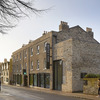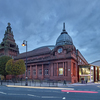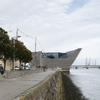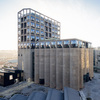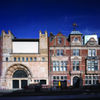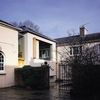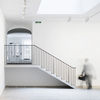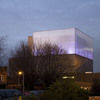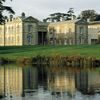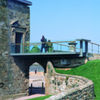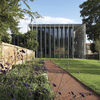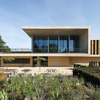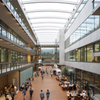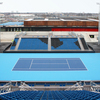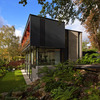Musée des Beaux-Arts
Subscribe now to instantly view this image
Subscribe to the Architects’ Journal (AJ) for instant access to the AJ Buildings Library, an online database of nearly 2,000 exemplar buildings in photographs, plans, elevations and details.
Already a subscriber? Sign in
The museum was established in 1801
Hufton + Crow Download Original
Stanton Williams has transformed Nantes’ 19th-century Musée des Beaux-Arts.
The architect’s decisions have been bold, hollowing out a cubic void from original architect Clément-Marie Josso’s hermetic block of granite and tufa and adding ‘Le Cube’, a new white marble monolith for contemporary art to one side. The Palais des Beaux-Arts de Nantes is tightly hemmed in by narrow streets, so extending it has proved complex. The first move was to discard the entrance gates and railings. Inside, the foyer has been decluttered, with a shop to one side and café to another before the visitor is presented with three alternative routes through the building.
Straight ahead, between two monumental flanking staircases, is the patio. This full-height, arcaded space is covered by an immense rooflight. Stanton Williams pared down this space, but before that could happen, a 6m-deep hole was gouged out of the floor to create a basement level auditorium and education rooms beneath and to enable proper waterproofing of the building from underground watercourses nearby. The newly created undercroft circulation spaces are made materially rich with exposed stone foundation walls, polished oak and mighty concrete portals.
Altogether, the museum now has 30 per cent more hanging space, allowing the display of 900 works out of its 13,000 holdings as well as ancillary spaces for everything from conservation to coffee.
The new façades take their inspiration from a mineral language through the use of stone in several forms. On the Cube, the main façade is made of translucent panels in trilaminated glass/marble/glass, laid on a pre-stressed cable structure. The architectural intention was to use the same crystalline marble as that used in the exterior cladding panels on the other façades. The choice of stone was white Estremoz marble from a quarry in Portugal.
The cladding panels of the translucent suspended façade are placed on T-shaped metal sleepers, which are fixed to a pre-stressed steel cable structure. Permanent traction applied to cable pairs resists wind forces on the façade.
This assembly is suspended from a ‘spinal beam’ on top of the façade, consisting of a series of brackets connected by continuous beams on the outer and inner rim. The spinal beam ensures the transfer of the vertical forces (prestressing in the cables, weight of the mesh and its fillings) and horizontal forces (wind forces on the upper part of the façade) to the concrete structure of the Cube building, via a technical sheath in concrete that serves as its interface.
The lower end of the cables, which includes the adjusting and tensioning devices, is connected to the reinforced concrete wall at ground floor level. The structure of the façade is regularly supported perpendicularly to its plane by means of bi-articulated stabilising rods which are connected to the vertical cable rows through the cable clamps. The lateral stabilisation planes consist of the passageways of the Cube building or the concrete floors and floors in the absence of corridors.
Data
- Begun: 2014
- Completed: 2017
- Floor area: 17,000m2
- Sector: Arts and culture
- Total cost: £42.9M
- Procurement: Standard French public construction contract
- CO2 Emissions: 49kg/m2/year
- Address: 10 Rue Georges Clemenceau, Nantes, 44000 , France
Professional Team 
- Architect: Stanton Williams
- Project architect: Patrick Richard
- Client: Ville de Nantes and Nantes Metropole
- Structural engineer: RFR Artelia and SEPIA and Partners
- M&E consultant: Max Fordham and GEFI
- QS/cost consultant: ARTELIA
- Fire engineer: Casso et Associés
- Wayfinding/identity: Cartlidge Levene
- Scheduling/construction management: ECB (design), E2CT (construction)
- Project manager: Nantes Metropole
- CDM co-ordinator : Ouest Coordination (Design) VERITAS (construction)
- Approved building inspector : Veritas
- Main contractor: Bouygues Bâtiment Grand Ouest
- CAD software used: Microstation






















